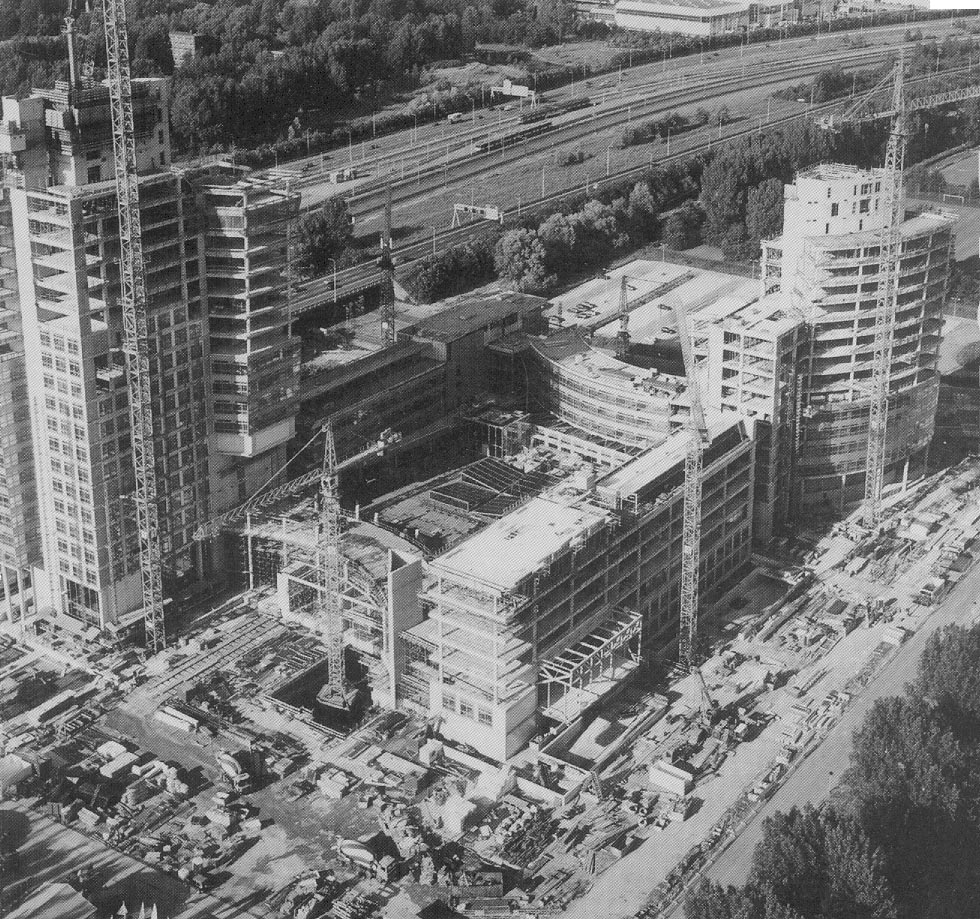‘We are not leaving Zuidas, we are selling the office and are leasing it back’, says senior officer Jarco de Swart for the umpteenth time. He has already had the entire country on the phone. In 2021, the head office will be sold. In the years to come, ABN AMRO will then be leasing the entire office from the new owner. However, in 2025, a majority of the employees move to the then fully renovated office at the Foppingadreef (nicknamed ‘the Fop’) in Amsterdam Zuidoost. A party familiar to Zuidas signs for the redevelopment of this office from 1980: immovable property developer EDGE, together with the original architect of the building, BroekBakema.

Sustainability and coronavirus
ABN AMRO refers to multiple reasons for this development. First of all, the bank intends to save costs, inter alia by cutting back the staffing complement by 15 per cent, effective from 2020. Secondly, ABN AMRO formulates high sustainability ambitions. After the upgrade, ‘the Fop’ in Zuidoost should consume 75 per cent less energy than the present building and in terms of the CO2 emission it arrives 50% below the standard from the UN Paris Climate Agreement. ‘We will also make the part of the office in Zuidas that we will also continue using after 2025 sustainable in a far-reaching manner’, says De Swart. Thirdly, ABN AMRO draws the lesson from the coronavirus crisis that there will permanently be more home-working. In Zuidoost, there will be 6,000 to 7,000 workplaces for approximately 11,000 employees. The bank does not know yet what departments and how many employees will remain in Zuidas exactly. ‘In any case, the dealing room. Our board will commute between the two locations.’ Nonetheless, Zuidoost will be the ‘principal establishment’ and Zuidas remains the ‘head office’.

Masterplan Zuidas
ABN AMRO can call itself one of the founding fathers of Zuidas. In the early nineteen nineties, the bank decided to move the head office from the city centre to a, at the time, fairly undeveloped strip between the Prinses Irene District and Buitenveldert. In 1998, the arrival of ABN AMRO resulted in the municipal Masterplan Zuidas and thus formed the catalyst of the tremendous development of the area in the last twenty years. With the 104-metre high tower and the office of 90,000 square metres of ABN AMRO as the centre piece, a district arose for, mostly, offices of financial and legal service providers. During this period, Zuidas roughly built 1 million square metres, of which three quarters are office space.

Ample opportunities
Where ABN AMRO is not standing still, neither is Zuidas. After 2025, a considerable part of the bank office will have a new designated use, literally at a one-minute walk from train and metro. This implies ample opportunities for those seeking vast space. In addition, the coming twenty years will revolve around the development of housing and facilities for Zuidas: another approximately 1 million square metres, but then three quarters for housing and facilities. This way, we will continue building on an extraordinary and simultaneously ordinary district for all residents of Amsterdam. ABN AMRO will also be part of this.

Give your opinion